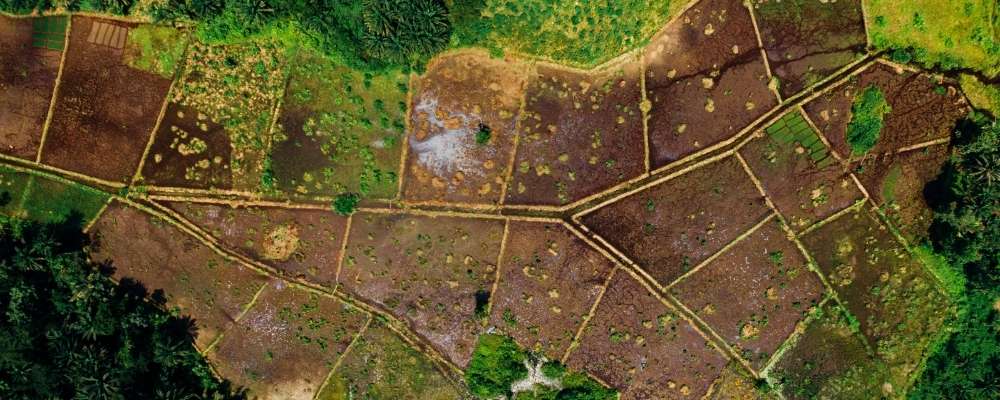There are many different real estate investing strategies you may consider if you’re looking to make money, including purchasing undeveloped land. Although it takes a little extra effort, purchasing land is a great way to invest your money if you make the right decisions. Here is a look at how to calculate market value of land, so you can decide whether or not this strategy makes sense for you.
What Is Land Market Value?
Land market value refers to the amount of money a piece of land would command from an informed buyer under ordinary conditions. It is based on the features, location, and desirability of the land and serves as a general estimate of what the land is worth on the open market. Keep in mind that when referring to the market value of the land itself, this excludes any structures, but does factor in certain improvements, such as an upgraded drainage system.
Also, understand that the market value is not necessarily going to equal the sales price. There are other factors that impact how much an actual buyer will pay for the land and the final sales price may be higher or lower than the market value. But market value refers to a rough estimate of what the land should be worth under normal conditions, which you can use to price your parcel and respond to offers.
Best Methods for Calculating the Market Value of Land
There are several methods used by investors and real estate professionals to determine the market value of land. The most common methods are the comparable sales approach, income analysis, and cost analysis.
1. Comparable Sales Approach
This is the simplest method and uses the sales data of comparable lots to determine a rough market value. This is done by comparing the sales price of other similar pieces of land in the area to determine a rough estimate, adjusting for any variances such as size, location, or other desirable features.
Say, for instance, there is one plot of land down the block that sold for $100,000 and another that sold for $70,000. The former is larger than your plot and the latter is smaller but other than that, they are comparable to your plot. Using the comparable sales approach, you could determine that your plot is worth somewhere between $80,000 and $90,000, depending on the exact dimensions. This gets a bit more complicated depending on how many other plots and factors you include in your analysis, but that’s generally how the comparable sales approach works.
2. Income Analysis
This method is also known as the residual land value analysis and is a bit more complicated but can often be more accurate if calculated correctly. This method begins with analyzing how much income a developed property could yield. Then, subtracting the costs of all other elements, except the cost of the land itself.
First, you must determine the gross development value, which is the amount a property will be worth if developed to its highest and best use. Then you must create a rough estimate of what it will cost to develop that property, including construction costs, architect fees, real estate commissions, financing charges, and any profits you plan to pocket. You subtract these costs from the gross development value and what you’re left with is the value of the land itself.
This method can get complicated and will likely require a professional to ensure accuracy. But it’s a strategy often used by savvy investors and can provide a sound valuation based on essential factors.
3. Cost Analysis
The cost analysis approach takes the opposite stance and values the land based on the costs associated with development. In the cost analysis approach, the value of a potential property is equal to the cost of land, plus construction costs minus depreciation. This method is trickier to use if the land is undeveloped and is often less accurate than the comparable sales and income approach. But it’s often required in special circumstances that include insurance claims, new construction, special use properties, and so on.
Buying Land vs Buying Property – Which is Better for First Time Investors?

Buying land has its benefits, but it can also come with its challenges. Unlike purchasing a property, when you buy raw land you can’t make money right away. You have to either develop a residential or commercial building to attract buyers and tenants or hold onto the property in the hopes that it appreciates over time.
Developing properties is more complex than simply purchasing rental property or even flipping an existing home. It requires knowledge of construction costs, zoning and tax laws, market conditions, and so on. Plus, it also requires more complex financing and risk assessment.
But if you are up for the challenge, there is more profit to be made when building something from scratch than purchasing an existing structure, so the added risks will pay off. Most first-time investors are likely better off choosing a simpler strategy, like single-family rentals. But, if you have the time and the vision for a piece of land and have a solid network of professionals at your disposal, it can be a rewarding and lucrative experience.
Is Buying Land a Good Investment in 2021
Buying land is always a good investment, no matter what year it is. It’s a great store of value because there is a consistent demand for new land, but only a limited supply – meaning that as long as you do your research and avoid overpaying, it will likely increase in value over the years.
But, like any real estate investment strategy, it comes with its risks and isn’t as straightforward as purchasing a developed property. If you want to make money by purchasing land, you’ll have to do extensive research and have a plan before diving in. There are all kinds of pitfalls you can run into that will impact the potential profits of your investment, related to zoning issues, topography, taxes, utilities, and financing. So, if you’re considering purchasing some land, it’s wise to consult a broker or other real estate professionals in your network to be sure that you’re making a wise investment.

